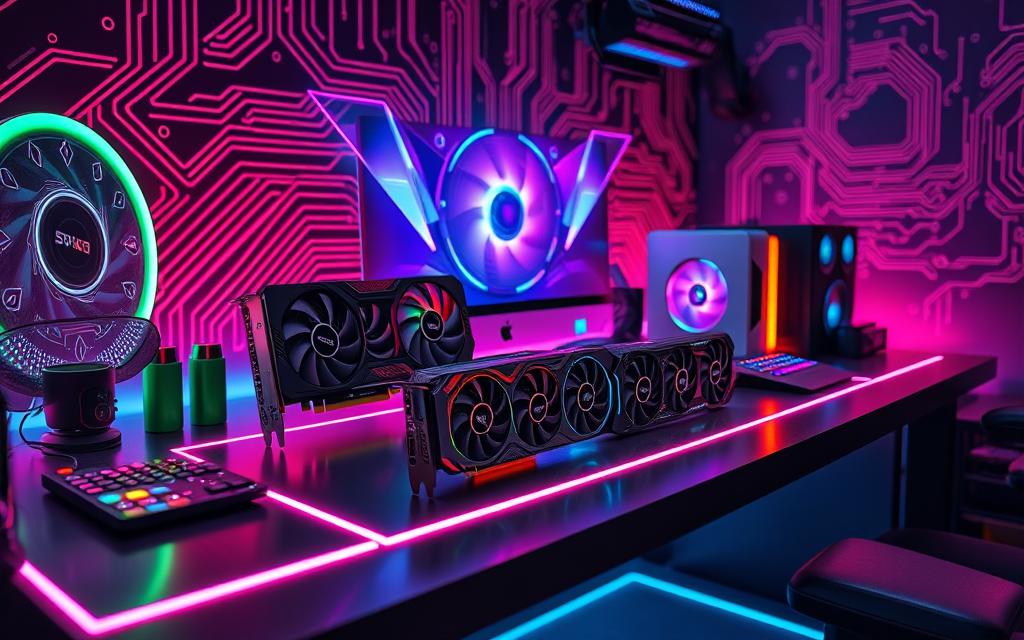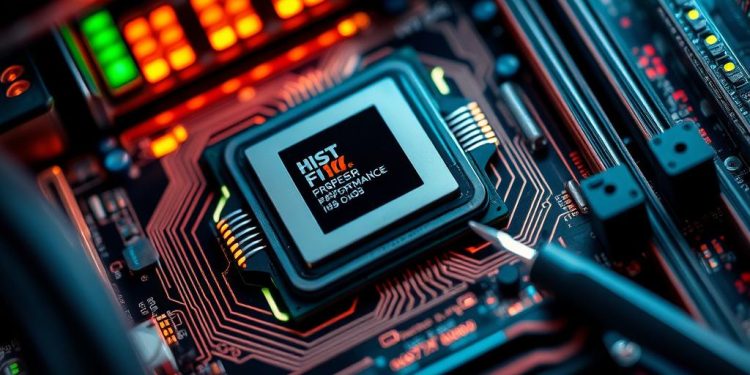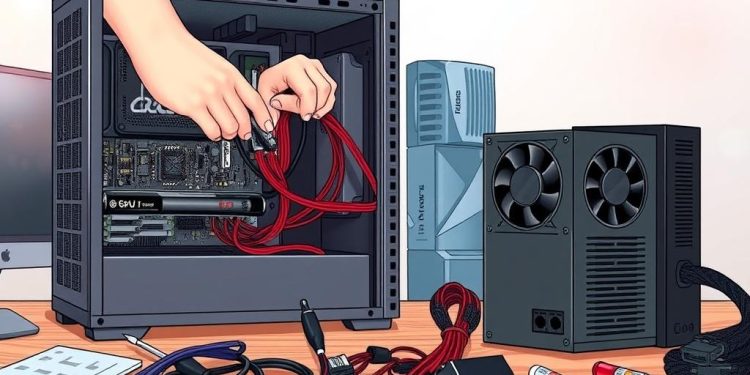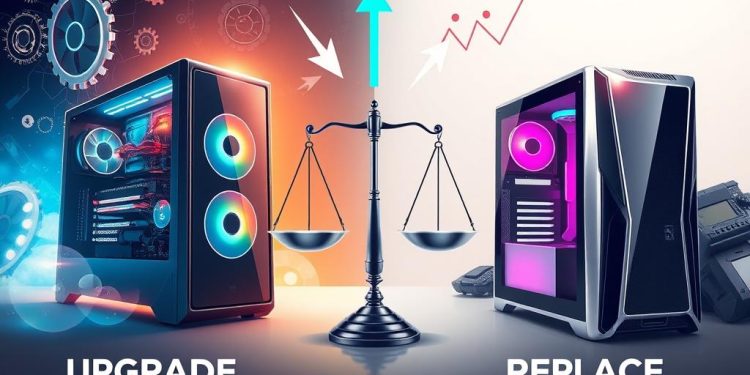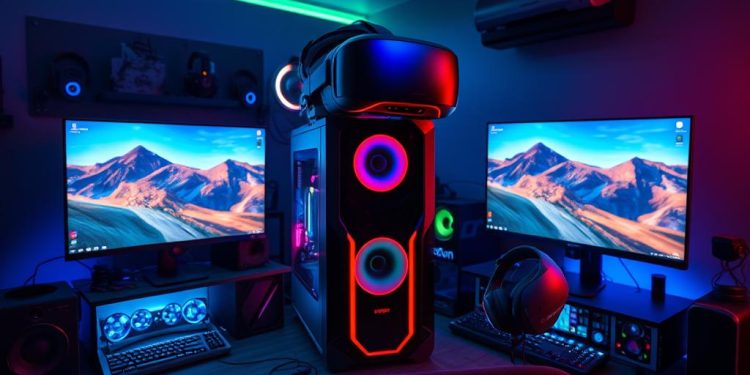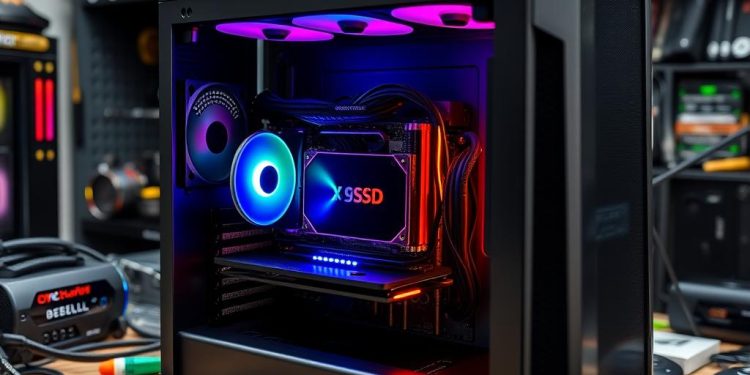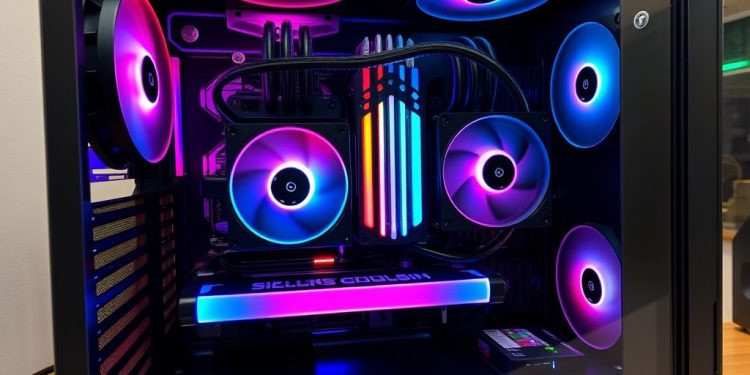Upgrading your gaming setup in 2025 with the best graphics cards is crucial for enhancing your performance and immersing yourself in captivating gameplay. As you dive into the world of modern gaming, keeping up with the latest graphics card upgrades will significantly impact your experience. With advancements in technology, today’s top graphics cards from Nvidia’s Ada Lovelace and AMD’s RDNA 3 architectures to Intel’s Xe deliver extraordinary frame rates, resolutions, and visual fidelity that every gamer desires.
This article will guide you through the best gaming GPUs available for different resolutions, ensuring that your gaming experience is as optimal as possible. Whether you’re playing at 1080p, 1440p, or exploring the stunning details of 4K games, our upgrade recommendations will help you choose a graphics card that fits your needs and budgets. Get ready to elevate your gaming adventures!
Understanding Graphics Card Performance for Gaming in 2025
As gaming continues to evolve, understanding graphics card performance becomes crucial for any gaming enthusiast. The GPU serves as the brain of your gaming PC, significantly impacting how smoothly games run. A strong GPU ensures higher frame rates, enhanced visuals, and compatibility with cutting-edge technologies such as ray tracing and VR. In 2025, making an informed decision relies on grasping various performance factors and choosing the right hardware for your setup.
Importance of GPU in Gaming Setup
The graphics processing unit is essential to superior gaming experiences. A powerful graphics card can transform gameplay by elevating your gaming PC performance. The latest generation of top graphics cards boasts advancements designed to handle modern gaming demands. Features like real-time ray tracing provide stunning visuals, significantly enhancing immersion. Understanding the importance of GPU performance will help you make sound choices that align with your gaming aspirations.
Factors Influencing Graphics Card Performance
Multiple factors contribute to the overall graphics card performance, impacting how well your games will run:
- Architecture: Modern GPUs utilize advanced architectures that enhance efficiency and speed.
- Core Count: More cores often result in better multitasking capabilities and improved performance.
- Clock Speeds: Higher clock speeds can lead to faster processing, benefiting gameplay.
- VRAM: Sufficient video memory is crucial for rendering detailed textures, especially at higher resolutions.
- Thermal Management: Efficient cooling systems prevent overheating, maintaining optimal performance during long gaming sessions.
Being aware of these elements will guide you to select the appropriate GPU for your needs in 2025, ensuring a gaming setup that excels in performance and visuals.
| Graphics Card | 1080p FPS | 1440p FPS | 4K FPS | Power Draw (W) |
|---|---|---|---|---|
| Nvidia GeForce RTX 4090 | 187.6 | 139.2 | 87.4 | 310 |
| Nvidia GeForce RTX 4080 Super | 167.4 | 112.6 | 65.4 | 240 |
| Nvidia GeForce RTX 4070 Super | 139.5 | 84.5 | 46.1 | 194 |
| Radeon RX 7900 GRE | 124.4 | 76.7 | 40.8 | 251 |
Top Graphics Cards for 1080p, 1440p, and 4K Gaming
Choosing the right graphics card depends significantly on your desired gaming resolution. Different GPUs perform uniquely based on the requirements of 1080p gaming, 1440p gaming, or 4K gaming. This guide outlines the recommended GPUs that excel in these categories while showcasing their specifications and pricing information.
Recommended GPUs for 1080p Gaming
For gamers who are still enjoying 1080p gaming, several GPUs deliver impressive performance without breaking the bank. The following options stand out:
- AMD Radeon RX 7600 – Priced at $287.63, it offers a base clock of 2250 MHz and a boost clock of 2625 MHz, making it an excellent choice.
- Nvidia GeForce RTX 4060 – Available for $304.99, this card features a base clock of 1830 MHz and a boost clock of 2505 MHz.
- Intel Arc A770 – At $199.99, it provides 16 GB of GDDR6 memory and has a TDP of 225 watts.
Recommended GPUs for 1440p Gaming
If you are aiming for better visuals with 1440p gaming, consider these powerful GPUs:
- Nvidia GeForce RTX 4070 Super – Priced starting at $600, it excels with 12 GB of GDDR6X VRAM and outstanding performance benchmarks.
- AMD Radeon RX 7700 XT – This option balances performance and pricing well, making it attractive for gamers focused on 1440p.
- Nvidia GeForce RTX 4060 Ti – Originally priced at $549.99 and now available for $519.00, this GPU is robust for 1440p gaming with a base clock of 2310 MHz.
Recommended GPUs for 4K Gaming
For gamers looking to dive into the world of 4K gaming, high-end GPUs deliver exceptional performance:
- Nvidia GeForce RTX 4090 – This high-end card offers unmatched graphics quality and an impressive frame rate, making 4K gaming truly enjoyable.
- AMD Radeon RX 7900 XTX – Priced at $709.99, it delivers outstanding visual fidelity and performance, particularly with ray tracing enabled.
Graphics Card Upgrades: Pricing and Availability
Understanding the current landscape of graphics card pricing and availability is essential for anyone considering an upgrade. Prices have shown considerable fluctuation influenced by market trends, GPU availability, and demand. As we move into early 2025, certain models are commanding notable prices due to ongoing scarcity, impacting your upgrade recommendations significantly.
Current Market Trends and Pricing Overview
The Nvidia RTX 4090 leads the high-end tier with a base price of $1,600. However, third-party variants can reach prices up to $2,300, with many being commonly priced around $1,800. This demand illustrates how graphics card pricing can greatly affect your purchase decision. Other models like the RTX 4080 Super and RTX 4070 Ti are priced at approximately $1,000 and range from $740 to $900, respectively, which shows the diversity in options available.
Interestingly, AMD’s recent RX 7700 XT and RX 7800 XT launched at appealing price points of $450 and $500, with the RX 7700 XT now typically priced around $370. Nvidia consistently maintains a large share of the GPU market, holding roughly 70% to 80%. Despite the fluctuations, budget-friendly options like the RTX 4060 and RTX 4060 Ti models range in affordability, making them appealing for gamers on a budget.
New Releases to Look Out For in 2025
This year promises a few exciting new GPU releases that could shift market trends. Nvidia’s upcoming Blackwell architecture is anticipated to introduce innovative features that could impact both performance and pricing. Similarly, AMD’s RDNA 4 lineup is expected later in the year and may create competition in performance and pricing, further influencing GPU availability.
Staying informed about these new GPU releases is critical for making well-informed upgrade recommendations. Keeping an eye on ongoing trends can help you navigate the evolving landscape of graphics card pricing, ensuring that you choose the right time for your upgrade.
Key Features to Consider in Your GPU Upgrade
When considering a GPU upgrade, several important features play a crucial role in enhancing your gaming experience. Understanding attributes such as ray tracing, performance benchmarks, power requirements, and cooling solutions will help you make an informed decision that aligns with your gaming needs.
Ray Tracing and Performance Benchmarks
Ray tracing capabilities significantly enhance visual realism in games, offering intricate lighting and shadow effects. The latest GPUs, particularly within the 40 series, deliver superior ray tracing performance compared to their predecessors, resulting in breathtaking graphics. To gauge performance, look at various performance benchmarks. Tools like 3DMark and gaming titles with built-in benchmarking routines, such as Tomb Raider or Metro, provide valuable insights into how a GPU performs under different conditions.
For any serious gamer, maintaining a frame rate above 30 fps is essential to avoid choppy gameplay. Benchmark results will vary based on resolution and detail settings, so consider these factors when evaluating potential upgrades.
Power Requirements and Cooling Solutions
Power requirements are another vital aspect to keep in mind. High-performance GPUs, such as the Nvidia RTX 4080, have a maximum draw of around 340W, necessitating a compatible power supply unit (PSU). Ensure that your PSU can deliver adequate wattage—typically ranging from 300W to 1000W—based on your overall system specifications and the new card’s needs.
Cooling solutions are equally important; many modern GPUs require advanced cooling systems to maintain optimal performance during intense gaming sessions. Larger graphics cards may occupy multiple PCI slots, so make sure your case can accommodate this along with its cooling solutions. Balance power efficiency and thermal management to prevent any performance throttling.
| Feature | Nvidia RTX 4080 | Power Requirement | Cooling Solutions |
|---|---|---|---|
| Ray Tracing Capability | Yes | 340W | Dual-fan or liquid cooling recommended |
| Memory | 16GB | PSU must exceed 500W | Aftermarket cooling options available |
| Performance Benchmarks | 10%+ improvement over previous generations | Connectors: 6 or 8-pin PCI-e | Customizable cooling solutions |
Conclusion
Upgrading your graphics card is essential for enhancing your gaming experience in 2025. The significant performance bumps offered by the latest 40 series GPUs, which show over a 10% improvement compared to previous generations, promise to elevate your gaming and productivity. Whether you opt for Nvidia’s RTX 4080 or explore AMD’s powerful alternatives, you’ll find an array of options tailored for various resolutions and budgets.
As you consider your upgrade recommendations, don’t overlook the importance of ensuring that your existing hardware, including your power supply unit, meets the necessary requirements for these advanced graphics cards. For instance, the RTX 4080 demands approximately 340W and a PSU of at least 600W for optimal performance. Paying attention to these compatibility checks will save you from potential bottlenecks that could hinder system performance.
With current market trends favoring lower prices for high-end graphics cards, now is an opportune time to invest. By making informed choices based on industry developments and future releases, you can reap the benefits of enhanced visuals and energy efficiency. Upgrading your graphics card may not only improve gaming dynamics but also ensure your system remains relevant for years to come.

